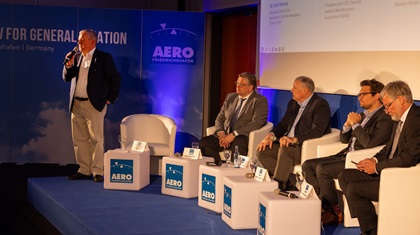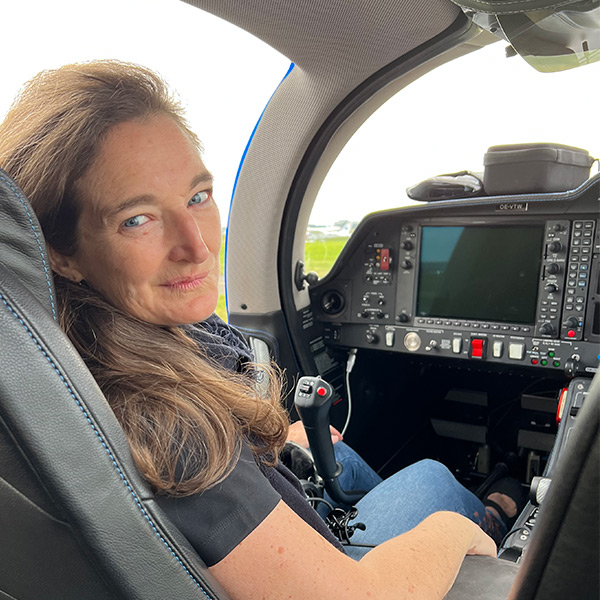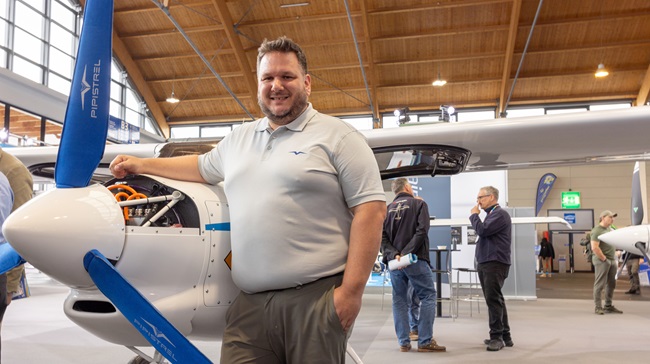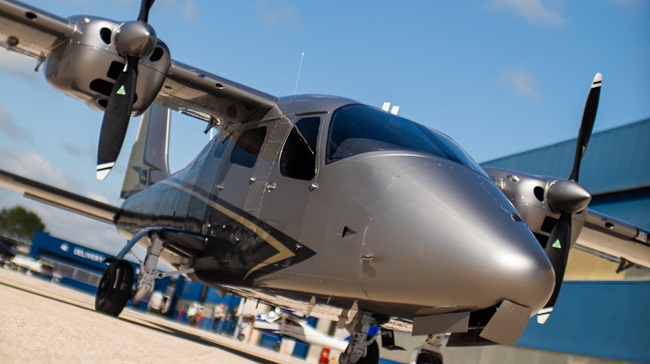Aero 2024 highlights innovation, challenges
Innovation underpins Aero Friedrichshafen in Germany. With its thirtieth installment, Aero in 2024 has become the largest general aviation trade show in Europe because it draws in the first movers and early adopters—from gliders to jets.
It also reveals the hazards ahead when it comes to industry trends, the drag of encroaching regulation, and economic and cultural pressures. In several forums during the week, themes continued from past years and have taken on greater urgency.
“The industry's ability to introduce innovative technologies and sustainable products into the market depend on it having effective, reliable, and supportive regulatory and business environments in place,” said Chuck Wiplinger, president and CEO of Wipaire and 2024 board chairman for GAMA.
Power trends
One key trend—and where regulatory support is vital—is the need for power solutions utilizing non-carbon-based sources, which has hit a critical juncture in the European Union. While the aerospace industry globally has agreed to decarbonize by 2050, as of now, the only answer on the market is a two-seat electric trainer, the Pipistrel Velis Electro. Others nearing European Union Aviation Safety Agency type certification are all on the very light end of the scale.
Larger, faster airplanes currently require hybrid power solutions, such as the joint Daher/Airbus/Safran EcoPulse demonstrator, which features six electric Safran motors distributed on a TBM’s wings, and a standard Pratt&Whitney PT6A-66D turboprop on the front end. As Nicolas Chabbert, senior vice president of Daher’s aircraft division, reported at the show, the project has logged 35 flights total, 14 of which have been flown on electric power. As it enters final testing phases, lessons will go into a newly imagined commercial product—that Daher intends to enter the design phase early next year. “The EcoPulse as a demonstrator is the worst aircraft you can ever design, because you pack in a certain number of technologies and test them,” said Chabbert. But it is critical for proving part of the near-term solutions for sustainability, and solving issues generated by the presence of high-voltage electric storage and distribution.
In part, that’s because hydrogen—like full electrification—has been slow to develop as a practical fuel. First, it is more challenging to design around given the current infrastructure. And the decision must be made between the use of liquid hydrogen and gaseous hydrogen fuels.
On SAF and UL, and book and claim
In the short and midterm, however, the industry must increase sustainability in aircraft powered by “normal”—avgas or jet fuel—combustion. While the move to unleaded avgas in the United States is strategized for 2030, the sunset of its use in Europe looms much closer: as soon as January 2025, according to GAMA. In fact, pressure to source any avgas has triggered piston manufacturers based in Europe—such as Diamond and Tecnam—to re-engine their fleets to burn Jet A.

Kyle Martin, vice president of GAMA’s European office, said the biggest contributor to achieving targets for net-zero carbon emissions by 2050 is sustainable aviation fuel. Although GA operators by and large would transition to SAF as soon as it’s available, SAF distribution has been restricted to a handful of major commercial airports. “We face some challenges getting access to that fuel,” said Martin. “Europe has passed the Refuel EU Aviation Regulation, which mandates SAF at large airports. That’s all fine for the airlines.” But around 2,000 airports in Europe are used daily by GA. This supply constraint could be addressed with a book and claim system, where an operator can pay the delta for SAF’s higher price and offset the cost to deliver it elsewhere, as is done in the United States. But regional user groups and manufacturers cannot convince the EU commission to adopt the system.
It’s frustrating, because similar programs are already used in Europe for sustainable electricity to households. “If you want to buy electricity, and…pay for wind-generated or solar, you're not necessarily getting that power directly into your home,” said Pete Bunce, chairman and CEO of GAMA. “It's all going into the grid. It's the same thing with book and claim. And we cannot convince the commission that this is the smartest way to go, because if we can buy it from a centralized source and the transportation costs are less, the price goes down—more people will use it.” Whereas SAF tends to cost twice as much as regular Jet A in the United States, it runs from three to six times higher in Europe, according to Deniz Weissenborn, founder and CEO of Platoon Aviation, a charter operator based in Friedrichshafen.
Workforce concerns
Workforce remains a challenge, with panelists in both sessions wishing to attract the 50 percent of the population—women—that remains elusive. Cate Brancart, GAMA’s director for European safety and sustainability, emphasized the efforts made to move the needle. “One of the biggest events that we have is Aviation for Girls,” said Brancart. “We had the third edition in February, taking place at Eurocontrol in Brussels. It’s more than 100 kids coming from more than 20 countries to discover aviation.” Trouble in replacing human capital throughout the supply chain has translated into ongoing constraints in throughput of materials, parts, and final products, and increased the seemingly capricious nature of shortages and/or pricing issues.
The new mobility
A final trend is advanced air mobility, and the industry in Europe faces the same infrastructure and implementation challenges as across the pond. The last mile will be tough, and placement of vertiports within communities isn’t a given. The public perception is that electric vertical takeoff and landing aircraft will provide luxury lift for the 1 percent. Instead, they can serve outside of urban areas as a first responder’s tool. “We have…the databases and positioning systems now to automate [deployment of an eVTOL from a local fire station],” said Bunce. “And we are not that far away from being able to have [a first responder] on site while the ambulance is going by road.”
Change in governance
The European Parliament elections take place in June, and with that comes both opportunity and risk. “We have a lot of work to do with the industry and the new parliament,” said Bunce, “and we will…emphasize how our segment of the industry—the technology incubators—will [drive our goal of net zero] by 2050.” Aerospace companies can't succeed without the integrated supply chain, and general aviation is a key element in that, he added.




